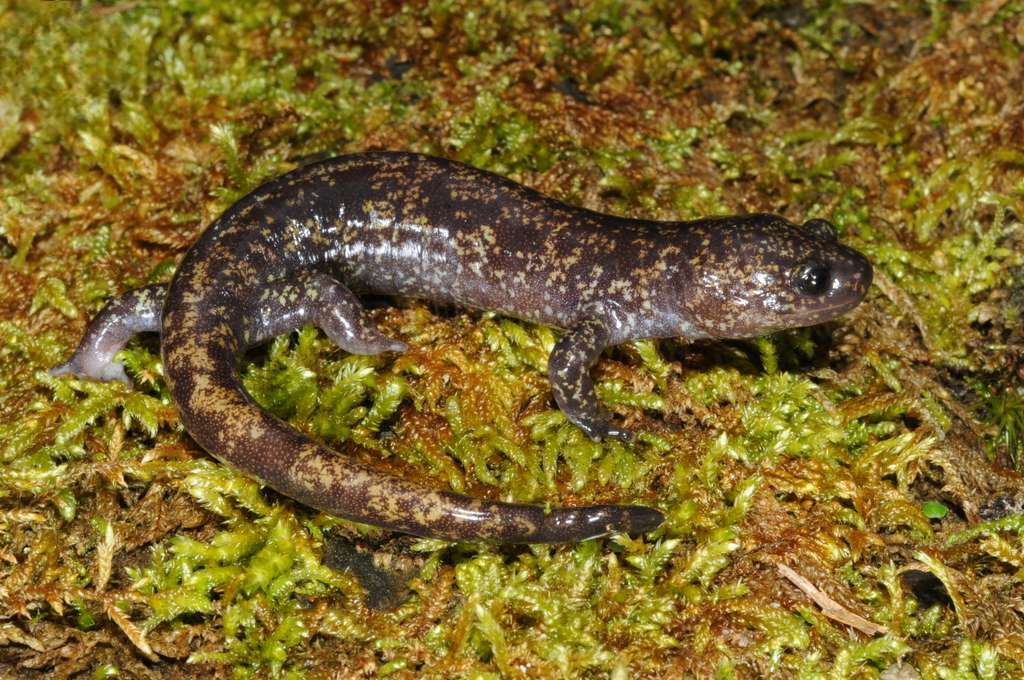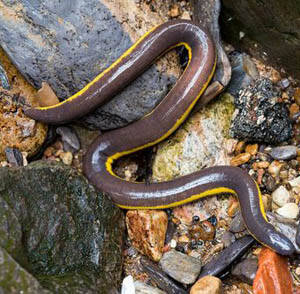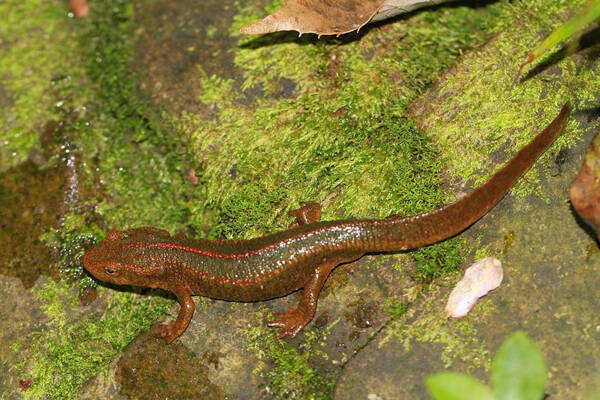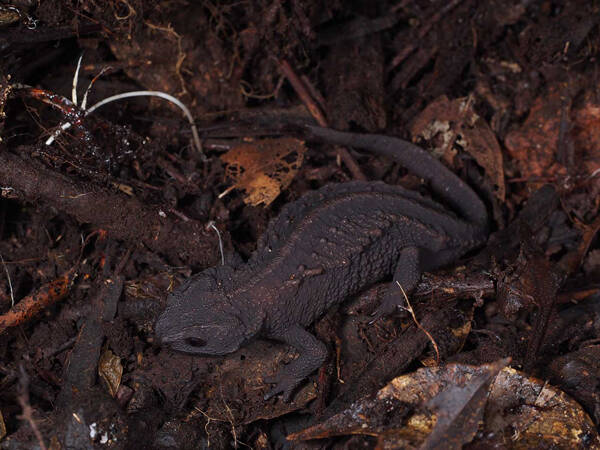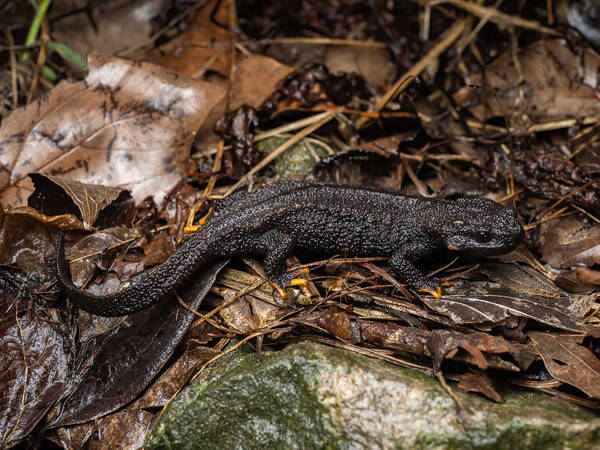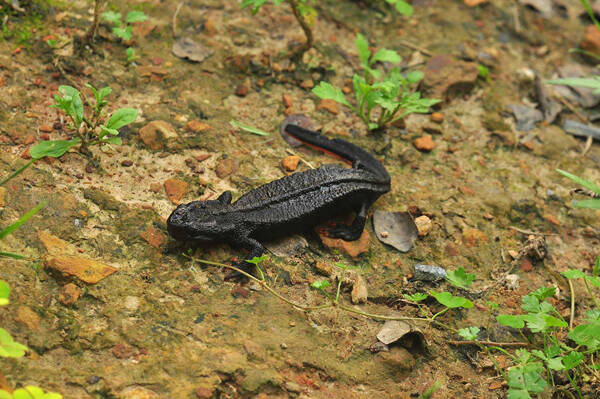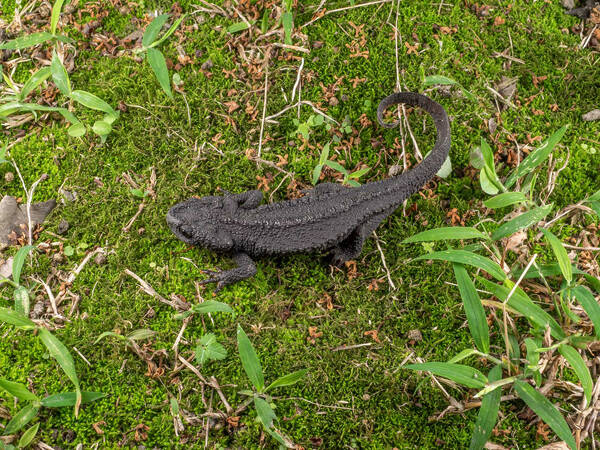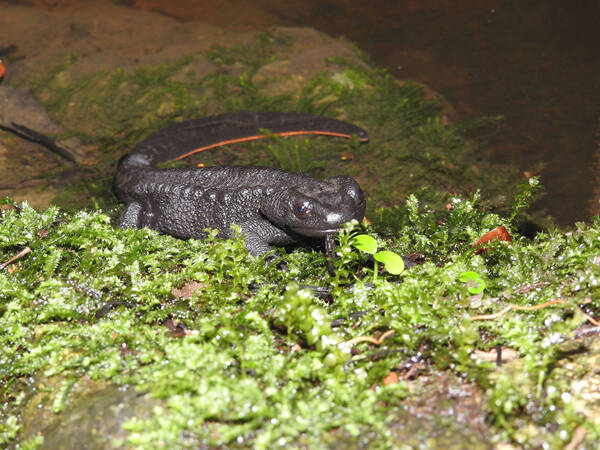Protohynobius puxiongensis
IUCN
LCBasic Information
Scientific classification
- name:Protohynobius puxiongensis
- Scientific Name:Protohynobius puxiongensis
- Outline:Urodela
- Family:Caudata Hynobiidae Protohylidae
Vital signs
- length:133mm
- Weight:
- lifetime:
Feature
The head is flat, the eyes are large and protruding, the limbs are well developed, the forelimbs are thinner, and the hind limbs are thicker.
Distribution and Habitat
Endemic to China, distributed in Sichuan (Puxiong Town, Yuexi County).
Lives in mountainous areas at an altitude of 2700-2900m. The area was originally a primeval forest with heavy rain in summer, humid environment, and many streams.
Appearance
The head is flat and oval, longer than it is wide; the snout is wide and round, with the nostrils close to the snout and no lip folds; the skull has no fontanelles and the nasal bones are large; the vomerine teeth are --shaped, located at the rear edge of the nostrils and almost meet at the midline. The trunk is cylindrical and slightly flat. The tail fin fold is weak and the end is rounded. The back is a uniform dark brown, the belly is dark gray, and the back of the tail has a slight brownish-yellow spot.
Details
Puxiong Prosaurus is a tailed amphibian of the family Hynantheidae and genus Prosaurus. In 1965, scholars from the Chengdu Institute of Biology, Chinese Academy of Sciences, collected specimen No. 1 of Prosaurus in an abandoned cellar for storing potatoes beside a stream at an altitude of 2,900 meters in Puxiong, Yuexi County, Sichuan Province, and named it Puxiong Prosaurus.
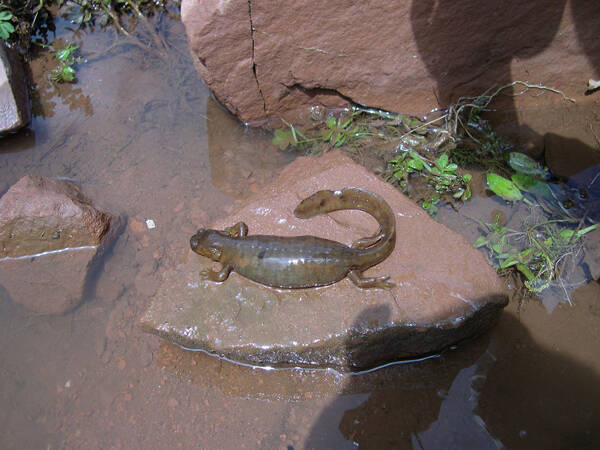
The habitat of the Puxiong Protisterius is located in the plateau mountains at an altitude of 2770 to 3000 meters, covered with alpine meadows and shrubs such as rhododendron and arrow bamboo, and lush grass. It mainly lives in mountain streams, small soaking ditches and puddles, pools, and stone caves, stone crevices, tree root holes and other hiding environments in swamps and other areas. The dense shrubs and grass around the mountain streams better protect the Puxiong Protisterius from direct sunlight and provide a relatively shaded environment.
The water environment is relatively clear and the water temperature is low, generally between 10 and 18°C; when the air temperature gradually rises (23 to 33°C), the temperature of the hiding places of adults and larvae (10 to 18°C) is 13 to 15°C lower than the outside air temperature, especially when the air temperature reaches 33°C at noon, the living environment temperature of Puxiong Prosiphon davidianus is only 16°C. According to measurements in April 2014, the water environment in which Puxiong Prosiphon davidianus larvae live is slightly acidic, with a pH value of 5.5 to 6.5; the water environment is relatively stable, with a water depth of 10 to 30 cm in small ditches, puddles and pools, and the shallowest pool in the swamp is only 6 cm.
The Puxiong Prosimus is a photophobic animal. Adults and subadults mainly hide in the cracks of rocks, caves and tree root holes around the pools, as well as in wet places around the swamps. When the rocks are turned over, they will quickly hide or drill into the dark, with their tails and trunks twisted. Adults have been observed on land, hiding 2 to 3 meters away from the water source. Juveniles mostly hide under dead branches, fallen leaves and stones in soaking ditches or small pools, and mostly forage and move in the water.
The breeding season is from mid-April to late May, and the spawning time varies in different habitats and individuals. Occasionally, there is a phenomenon of concentrated breeding, and males stay in the spawning grounds and protect eggs. During the breeding season, adults are active in the spawning grounds in the year-round flowing water environment. After the breeding season, the adults leave. In autumn, adult Puxiong Prosimus natans were dug up from bamboo roots and shrub roots near the spawning grounds.
The ecological environment quality of the salamander's habitat has declined, and after investigation, its population is extremely small.
It is listed in the first level of the "List of National Key Protected Wildlife in China".

